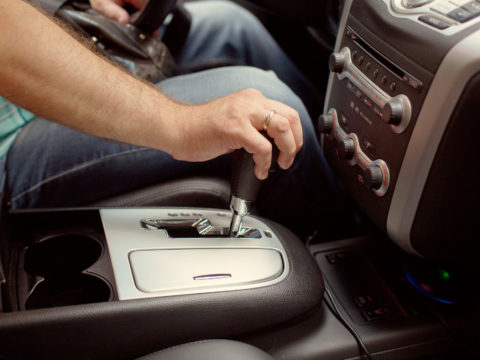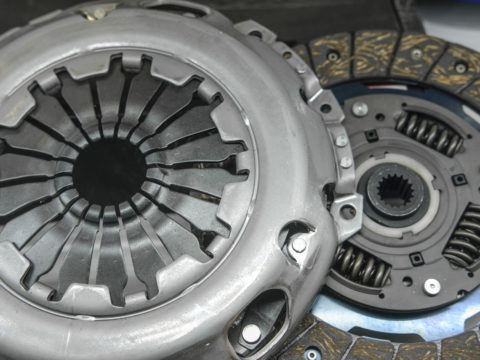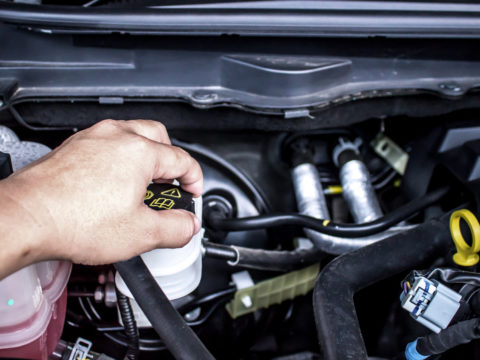Cars are often referred to as wheels because, ultimately, the wheels of the car enable you to go anywhere. Your car’s transmission is what converts power from the engine to the wheels, and the transmission temperature is essential.
Transmission temperature refers to the temperature of the transmission oil in your car. When your car’s check engine light comes on, you may get a message saying, “check transmission temperature.” If this light comes on, you must pull over to the side of the road to let it cool off. You may also smell a sweet odor.
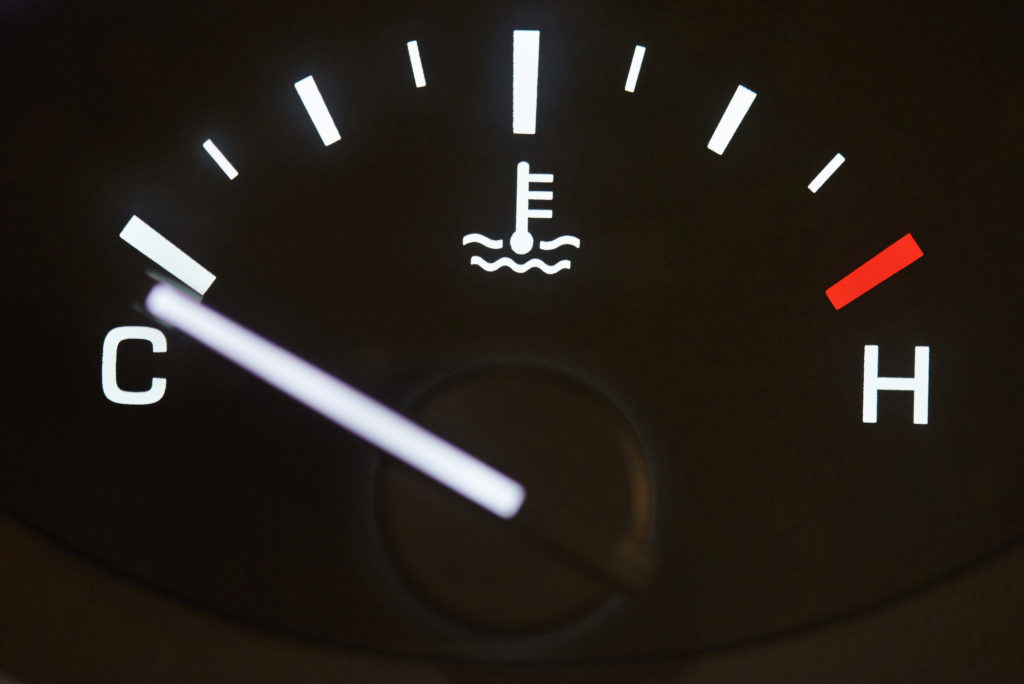
Contents
How Do You Check Your Car’s Transmission Temperature?
Monitoring the transmission is critical to ensuring that your vehicle does not get too hot. There are two ways to check your transmission fluid. You can use a dipstick or a scan tool.
How to Check Your Transmission With a Dipstick
The simplest way to check your transmission fluid level is with a dipstick:
- Turn on your car, put it into neutral, and let it get warm.
- Pop open the hood and remove the dipstick.
- Touch your finger against the fluid on the dipstick and rub your finger and thumb together. The fluid on the dipstick should turn a pinkish color.
- If it smells burnt, it needs to be replaced.
If everything comes out good, you should wipe off the dipstick and reinsert it. Make sure that it comes out to the full line. If it is not full, you should add a bit of transmission fluid.
Checking Transmission Temperature with a Sensor
Transmission sensors can give you a better reading of the temperature of your transmission. Transmission sensors cost between $10 and $100. Check your owner’s manual to determine the exact way to use one of these tools. Some higher-end vehicles will let you use an OBD 2 monitor to check your fluid. There are even some vehicles that come with their own monitors.
Every monitor is different, so you should read the instructions carefully. There are a few basic steps that you will take with all monitors:
- Connect the transmission tool to the transmission sensor into the body OBD port that is located under your dashboard.
- Turn your car on without starting it.
- Look at the monitor and select the live data option.
- The live data screen will allow you to choose the temperature reading.
If the transmission fluid is too hot, you should take it to a mechanic right away.
Safe Transmission Temperature Range
A driver should keep a careful eye on the transmission and ensure that the transmission temperature fluid is between 175 to 220 degrees. If it is any hotter, it can be a sign of trouble. You should take your car in for regular checkups to ensure that your transmission runs well and not overheating.
What Does High Transmission Temperature Mean?
High transmission temperature means that your car is overheating. If your transmission fluid gets too hot, it will be harder to shift gears. The car parts that control the clutch will get worn and damaged during high heat levels.
What Causes Transmission Temp to Rise?
Your car will overheat when it is running out of fluid. This may be caused by leaks. It can cause your whole engine to fall apart. It may also overheat if you do not change the fluid out regularly. Old oil will not heat properly.
A defective solenoid may cause a transmission to run hot as well. The solenoid in your transmission manages the amount of fluid that gets passed into the transmission. When a transmission does not get enough fluid, it overheats. If this is the case, the solenoid should be replaced right away.
How to Lower Transmission Temperature
If your transmission temperature is too high, you should pull over to the side of the road and let it cool off completely. You should check the level of transmission fluid and add fluid if necessary. If that does not work, you should change the transmission fluid. If the light keeps coming on, you should take your car to a mechanic.
What Does Low Transmission Temperature Mean?
If your transmission fluid temperature is running too low, it will not eliminate the condensation inside of the transmission. And the car may not operate as well as it should.
Causes of Low Transmission Temperature
The most common cause of cold transmission fluid is cold weather, but overheating is the cause of the majority of transmission failures. Overheating can cause several critical problems with the transmission.
How to Fix the Anomaly
You should warm your car up for more than a few minutes on cold days. This will give the vehicle and the fluid in it a chance to heat up.
So, What Do You Do When the Transmission Temperature Light Comes On?
When the transmission temperature light comes on, you should pull over to the side of the road and wait for your car to cool down completely. If it gets hot the second you start the car, you should call a mechanic.
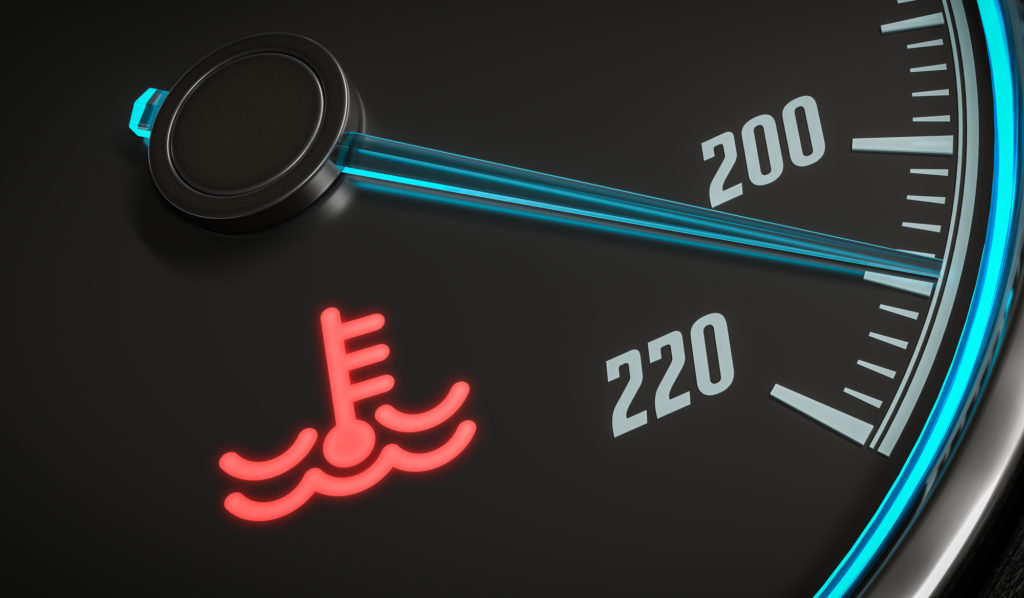
Why It’s Important to Monitor Your Car’s Transmission Temperature
If a vehicle is overheated, it can ruin the transmission, and you will not be able to drive your car. It can cause a multitude of problems in the vehicle.
If the transmission is leaking, it may become hot very quickly. Transmissions must have fluid to stay cool. Overheating creates pressure causing the fluid to thicken and burn. It will not cool and lubricate the transmission, making it hard. Overheating can cause a multitude of problems.
Seals Hardening
Transmission seals are what stop transmission fluid from going where it should not. The input shaft seal stops fluid from going beyond the input shaft. The input shaft attaches to the apparatus that is connected to the transmission. The output shaft seal prevents fluid from getting out of the transmission into the driveshaft yolk.
When seals harden, they can easily crack. Cracks in the transmission seals will eventually cause leaks in the engine.
Slipping Plates
An automatic car has a conductor plate that sits atop the body of the transmission. The pressure relief valves and shift control valves mount onto this plate. The speed sensors are attached to this plate as well. A conductor inside the transmission sends signals from the control module to the valves. An automatic transmission will not operate correctly without these sensors.
When sensors fail to work correctly, the control unit in the transmission cannot sense the gear in which to put the transmission. This will cause the transmission to become stuck in one gear. Hot transmission fluid can damage the plates and cause them to slip.
Clutch Burn Out
If your clutch burns out, you will smell burning rubber when you drive your car. It may slip out of gear, and you may notice that oil is leaking from your vehicle. If your clutch feels spongy or hard to move, it may be a sign that your clutch is burning out. The clutch pedals may also feel strange when you push down on them and make a grinding sound when you shift gears.
FAQs
Let’s review the common concerns people have regarding transmission temperature.
Where is the transmission temperature sensor located?
You will find it located in the valve body or oil pan of the transmission.
How much does it cost to replace a transmission temperature sensor?
The cost of labor should be between $136 and $172. Parts will cost between $112 and $125.
What temperature should the transmission fluid be?
The average temperature will be between 175 to 220 degrees. Take good care of your car and check your transmission fluid regularly. Good maintenance is essential to staying on the road.
What should my transmission temperature be when towing?
The transmission temperature when towing should be approximately 195°F.

